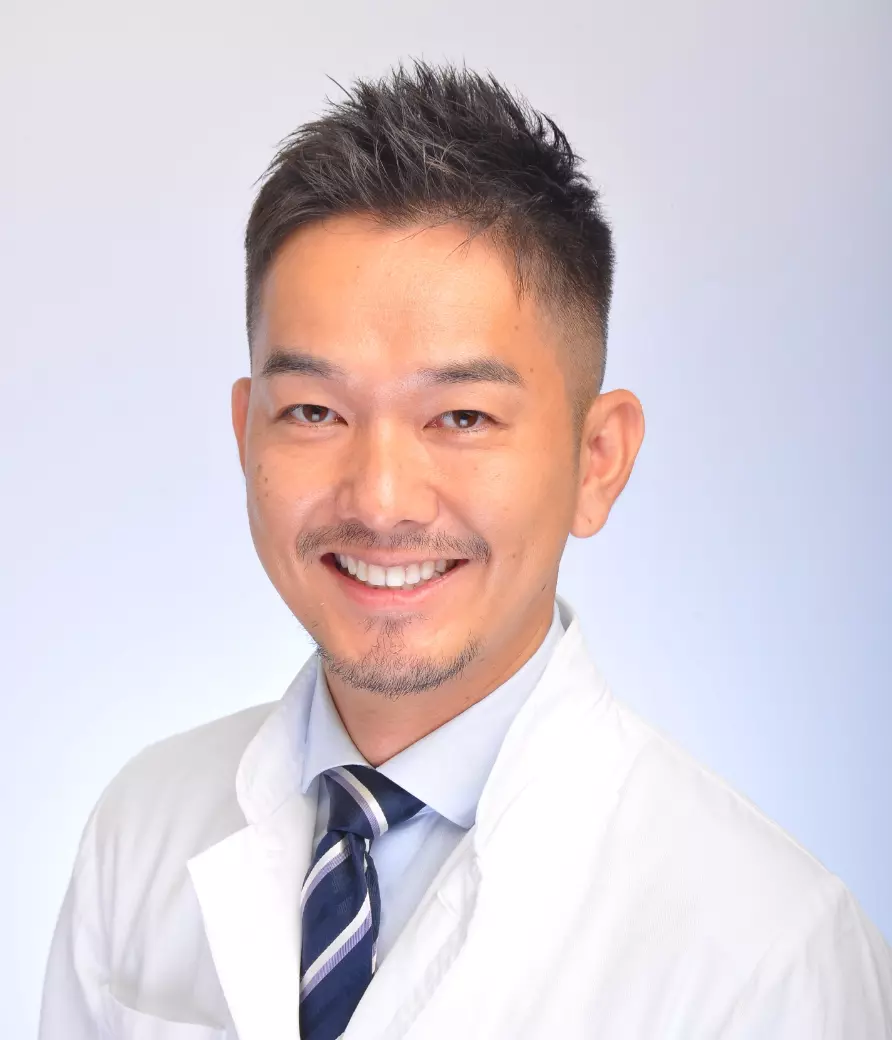

Director Introduction
幸田 なおき (naoki koda)
Welcome to our clinic’s website.
I was a little bit good with my hands and planned to become a barber, but entered in dental school by a twist of fate. In the mild climate of Okayama-pref., I learned and grew with kind classmates, and I was ready to face the medical profession. As a doctor, I have gained experience in a variety of cases related to dentistry, as well as orthodontics, from university hospitals in the Tokyo Metropolitan city to clinics in the suburbs.
After treating more than 2,000 people, I realized that "beauty can only be achieved on the basis of health. If there is no functionality at the root, it is difficult to stabilize the alignment of the teeth."
Since I entered and trained the orthodontics department, many seniors has taught me various techniques and made me what I am today.
Even in France, I was involved in treating patients with different bone structures from those of Asians.
Orthodontic devices are evolving day by day, and some doctor thinks that orthodontists will no longer be necessary in the future. However, as my professor Keiji Moriyama once taught me, "It's not the appliance that cures teeth in orthodontic treatment, but the passion of the orthodontist who uses the appliance that does."
Even if people have the same number of teeth, there are always some cases that can only be cured by orthodontic specialists because of the vast differences in bite force, cheek and tongue strength, and bone shape.
If there is a problem with bones, bone-cut surgical operation will be required at a hospital, but if not, orthodontic treatment can help you achieve a beautiful alignment of teeth and good occlusions. Being able to "smile naturally with your own teeth" is more satisfying than you can imagine.
The field of orthodontics has seen many problems in recent years, such as lawsuits and sudden clinic-closures, but I do will dedicate my life to continuing to hone my solutions to all malocclusions with a variety of approaches by combining orthodontic treatment that incorporates overseas techniques with Japan's proud of insurance treatment, such as small surgical operations.
Biography
- Graduated from Kano High School in 2004 (Gifu-pref.)
- Graduated from Okayama University School of Dentistry in 2010
- Joined the Department of Dentistry and Oral Surgery at Keio University Hospital in 2010 and till 2012. And entered the Department of Orthodontics at Tokyo Medical and Dental University Hospital in 2012 and till 2019 (Ph. D course graduated in 2016).
- JOS (Japanese Orthodontic Society) certificated doctor(2018-present)
- Stayed and learned orthodontic technique in France in autumn 2023.
- Director of TSUJIDO RIVAGE ORTHODONTIE opened in 2024

J'étais un peu habile de mes mains et je prévoyais de devenir coiffeur, mais je suis entré à l'école dentaire par un coup du sort. Dans le climat doux de la préfecture d'Okayama, j'ai appris et grandi avec des camarades de classe aimables, et j'étais prêt à affronter la profession médicale. En tant que médecin, j'ai acquis de l'expérience dans une variété de cas liés à la dentisterie, ainsi qu'à l'orthodontie, des hôpitaux universitaires de la ville métropolitaine de Tokyo aux cliniques de la banlieue.
Après avoir traité plus de 2 000 patients, j'ai réalisé que « la beauté ne peut être obtenue que sur la base de la santé. S'il n'y a pas de fonctionnalité à la racine, il est difficile de stabiliser l'alignement des dents ».
Depuis que je suis entré et formé au département d'orthodontie, de nombreux seniors m'ont enseigné diverses techniques et ont fait de moi ce que je suis aujourd'hui.
Même en français, j'ai été impliqué dans la thérapeutique de patients ayant des structures osseuses différentes de celles des Asiatiques.
Les appareils orthodontiques évoluent de jour en jour, et certains médecins pensent que les orthodontistes ne seront plus nécessaires à l'avenir. Cependant, comme mon professeur Keiji Moriyama me l'a appris un jour, « ce n'est pas l'appareil qui guérit les dents dans la traitement orthodontique, mais la passion de l'orthodontiste qui l'utilise qui le fait ».
Quoique même si les gens ont le même nombre de dents, il y a toujours des cas qui ne peuvent être guéris que par nos orthodontistes en raison des grandes différences de force de morsure, de force des joues et de la langue et de forme osseuse.
S'il y a un problème avec les os, une opération de coupe osseuse sera nécessaire dans l’hôpital, mais dans le cas contraire, un traitement orthodontique peut vous aider à obtenir un bel alignement des dents et de bonnes occlusions. Pouvoir « sourire naturellement avec ses propres dents » est plus satisfaisant que vous ne pouvez l'imaginer.
Le domaine de l'orthodontie a connu de nombreux problèmes ces dernières années, tels que des poursuites judiciaires et des fermetures soudaines de cliniques, mais je consacrerai ma vie à continuer à perfectionner mes solutions à toutes les malocclusions avec une variété d'approches en combinant un traitement orthodontique qui intègre des techniques étrangères.

 French
French  English
English